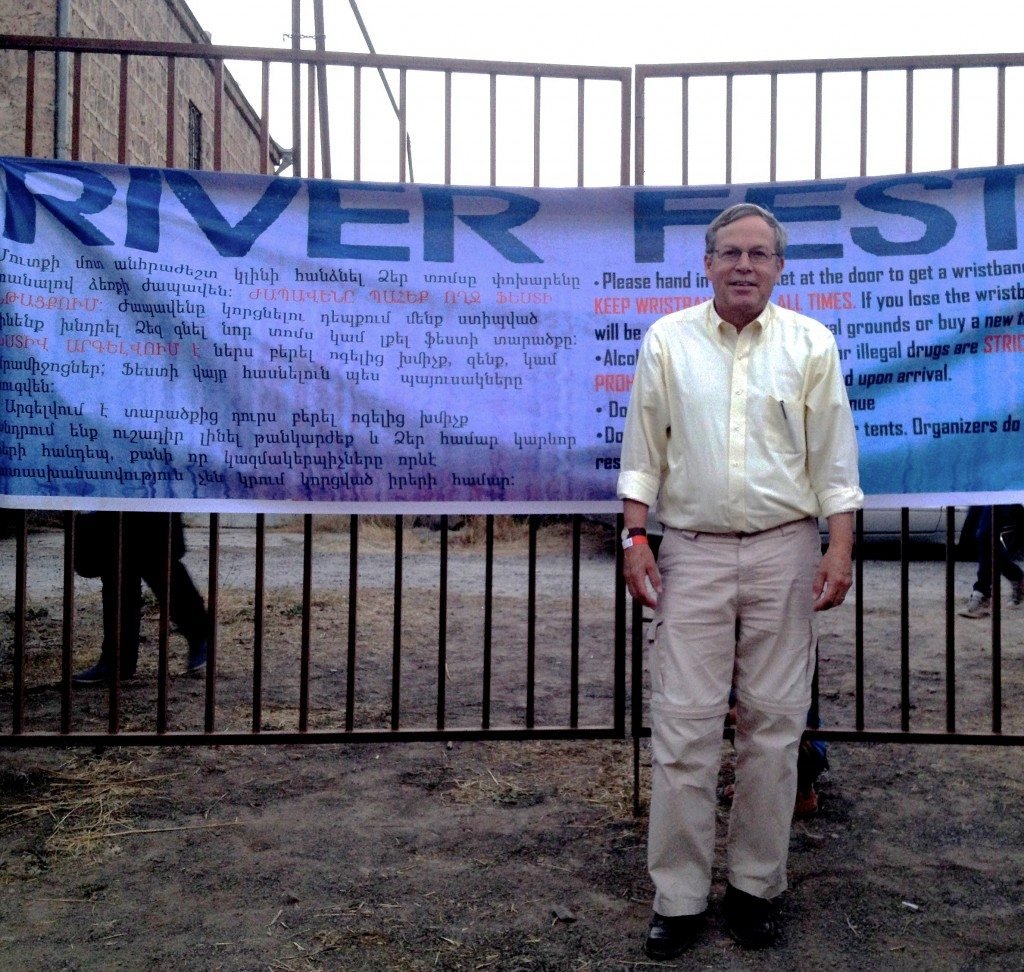Special for the Armenian Weekly
The second half of the 20th century witnessed Armenia flourish as the underbelly of rock and roll in the Soviet Union, a status that reached its peak when the Armenian Ministry of Culture in 1981 hosted a weeklong rock music festival in Yerevan that came to be known as the “Armenian Woodstock.” TIMES Magazine wrote, “Young Soviets came from as far away as the Baltic republics, central Russia, and even Siberia… They loved it. They loved it all in Yerevan.”

Although little has been done to preserve the memory of the Armenian Woodstock, over 30 years and one fallen empire later, young people in Yerevan are slowly but surely reclaiming the city’s position as a hotbed of urban culture. Aug. 15-17 witnessed Armenia’s second annual open-air rock music festival since the Soviet era. It was appropriately named River Fest, for its serene and somewhat secluded venue in Getamej (“Mid-River”), a town on the humble outskirts of the capital.
The brainchild of Saro Hassassian, one of Yerevan’s rock veterans, the purpose behind River Fest was two-fold. Andre Simonian, in charge of band selection, stage, and lights and lead singer of “The Beautified Project,” says that first and foremost, they hoped “to develop the culture of live music in Armenia, which was dead only six or seven years ago.” Yet the festival also had a more philanthropic agenda. Prior to the performance, the event’s Indiegogo campaign raised $2,500 so that the funds from the ticket sales were able to go towards rebuilding a school in the town.
Underground, but not to be underestimated
In the years since the USSR’s collapse, many have mistaken the subversive nature of Armenia’s live music scene for stagnancy. Performance opportunities for most bands don’t exceed Yerevan’s smoky, dimly lit pubs. Simonian recalls, “Even the sound engineer who I was working with asked me, ‘How are you going to control a two-day festival with only local bands?’ I said, ‘We have a lot of talent, it’s just they don’t have the opportunity.’”

While some well-known bands were a predictable addition to the roster, others were reaching ears for the first time. The homegrown line-up turned the volume up on contemporary music in Armenia and demonstrated that while its scene may be underground, it’s not to be underestimated. Highlights included Palm of Granite, a folk band originating from Los Angeles and featuring new-age Armenian troubadour Raffi Semerdjian, and 1243K, an electro-grunge band whose cheeky repertoire included love songs to sugar-trafficking oligarchs.
Getting to Know Getamej
Getamej is not a familiar destination for tourists, to say the least. The festival introduced not just a new soundscape for its audience, but also a fresh landscape, located outside of the comfortable pillow of Yerevan’s urban sphere. Cars filled with festivalgoers approached the venue via rocky, unpaved roads and hand-painted signs, signaling the entrance into new territory on nearly every dimension. The festival was valuable exposure for the local villagers who were eager and accommodating, even assisting organizers in preparing and building the venue.

Organizers hoped the festival could also provide Getamej with some valuable exposure and economic stimulation. River Fest gave the town an opportunity to mingle with the event’s diverse audience, which included U.S. Ambassador John Heffern, and rather than importing vendors from Yerevan, Hassasian and his team used the opportunity to hire a local to provide the food. However, being a socially and economically isolated region for so long, the man cancelled the night before, claiming a fear of tax penalties.
What’s next?
This year’s River Fest was a success, but there is much room for improvement in the future, say organizers, who hope the festival’s line-up can grow to include more diverse musical genres like jazz and electronic house music. Reinvigorating and rediscovering a country’s urban social scene is no simple feat, especially one as complex as Armenia’s. Thus, while this year’s festival was a far cry from the elaborately planned Armenian Woodstock of 1981, it’s still proof that even the smallest successes are worth celebrating. “What’s amazing is how people have changed in the last eight years,” Simonian says, “how they are much more open-minded. I really hope this thing grows—this kind of thinking.”

The idea that Armenia could once again reclaim the hip, urban underground that attracted 80,000 Soviet youths from every corner of the USSR is an exciting one, and it’s something we should all be looking forward to. But in the meantime, patience and optimism are key—a sentiment echoed by Arik Grigoryan, who addressed the audience at 1 a.m. as they cheered for “The Bambir” to play just one more song: “We’d like to play another song, but we have neighbors, and since you all don’t have to wake up at 7 a.m. and milk the cows, why don’t we just have another drink and settle down?”



Be the first to comment